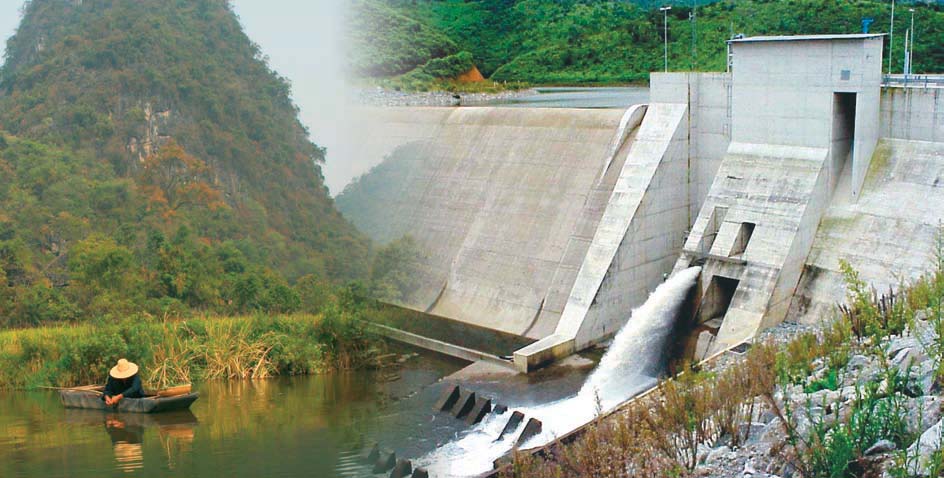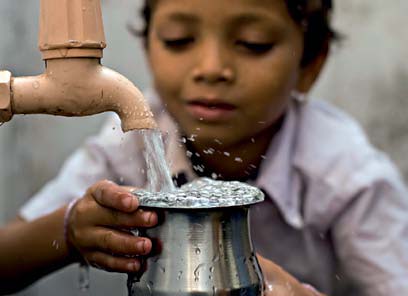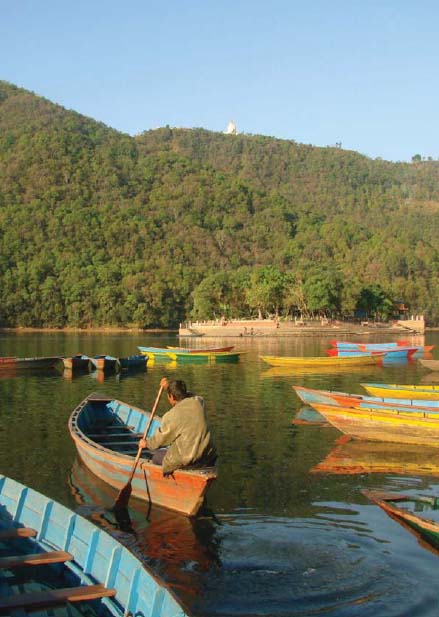/topics/surface-water
Surface Water
Deciphering environmental flows - An article in Seminar magazine - Jayanta Bandyopadhyay
Posted on 30 Oct, 2011 10:45 AMAuthor: Jayanta Bandyopadhyay
This article published in the Seminar 626, October 2011 argues that our current state of knowledge of water systems and ecological modelling related to flows of water, which includes projecting a single quantitative figure of water requirements, is inadequate. Such a unilateral prescription of environmental flows or water requirements of aquatic systems as a method for the resolution of water conflicts may actually become the source of many new conflicts.
Sustainable resources management for food security and sustainable livelihoods - Action - A Newsletter of AFPRO
Posted on 30 Oct, 2011 07:46 AMThese technologies include soil and water conservation measures, integrated farming, diversion based irrigation systems, sustainable agriculture, tree-based farming to name a few.
Environmental flows in water resources policies, plans, and projects - Case studies by IBRD
Posted on 29 Oct, 2011 06:34 PM This report comprising a set of case studies by International Bank for Reconstruction and Development (IBRD) presents how environmental flows is dealt with in water resources policies, plans, and projects. It focuses on the integration of environmental water allocation into integrated water resources management (IWRM) and so fills a major gap in knowledge on IWRM.
This report comprising a set of case studies by International Bank for Reconstruction and Development (IBRD) presents how environmental flows is dealt with in water resources policies, plans, and projects. It focuses on the integration of environmental water allocation into integrated water resources management (IWRM) and so fills a major gap in knowledge on IWRM.
Where and how is the state - Accessing water and the state in Mumbai and Johannesburg - Journal of Asian and African Studies
Posted on 29 Oct, 2011 05:28 PMThis paper published in the Journal of Asian and African Studies examines the argument that the political and institutional contexts of service delivery shape people's access to the state and its resources and also the mediation between citizens and g
Towards drinking water security in India: Lessons from the field – A report by Water and Sanitation Program
Posted on 29 Oct, 2011 11:33 AM This report by the Water and Sanitation Program of the World Bank provides an account of the field level initiatives on drinking water security in India. The country faces many challenges in ensuring reliable, sustainable safe drinking water supply to rural households.
This report by the Water and Sanitation Program of the World Bank provides an account of the field level initiatives on drinking water security in India. The country faces many challenges in ensuring reliable, sustainable safe drinking water supply to rural households.
Though, in terms of provision of safe drinking water, more than 90 percent of the rural households have been covered, according to the NSSO 65th round survey 2008-09, much remains to be done to improve levels of service delivery, water quality and sustainability.
An inventory of Greater Himalayan wetlands – A manual by ICIMOD
Posted on 27 Oct, 2011 03:00 PM This manual by International Centre for Integrated Mountain Development (ICIMOD) deals with an inventory of Greater Himalayan Wetlands and has been developed to assist governm
This manual by International Centre for Integrated Mountain Development (ICIMOD) deals with an inventory of Greater Himalayan Wetlands and has been developed to assist governm
Mapping drought patterns and impacts: A global perspective – A research report by IWMI
Posted on 26 Oct, 2011 08:11 PMThis study by the International Water Management Institute (IWMI) examines the global patterns and impacts of droughts through the mapping of several drought-related characteristics – either at a country level or at regular grid scales. Characteristics cover various aspects of droughts – from global distribution of meteorological and hydrological drought risks to social vulnerability and indices related to water infrastructure.
Climate change impact on hill agriculture and farmers adaptive strategies – A case study of Kullu valley in Himachal Pradesh
Posted on 26 Oct, 2011 06:35 PMIt takes apple as an indicator crop to investigate the positive and negative effects of climate change on farm economy. The research is a field study to determine the agricultural and socioeconomic impact of climate change on the farmers apple economy of the Kullu valley in Himachal Pradesh, India.
Evaluation of operation and maintenance of sewage treatment plants in India - Control of urban pollution series - CPCB (2007)
Posted on 26 Oct, 2011 03:39 PMThis study was commissioned recognizing the fact that discharge of untreated sewage occurs not only because of inadequate installed capacity of sewage plants, but also due to the inadequate maintenance of existing plants.
Whispers of Silence - Exhibition and Seminar, WGHF, October 25-26, 2011, Thrissur
Posted on 25 Oct, 2011 07:17 PMOrganization: Western Ghats Hornbill Foundation (WGHF)
Venue: Sahithya Academic Hall, Thrissur

Description:
The Western Ghats Hornbill Foundation (WGHF) is organizing a two day workshop on right of the forest, river and tribe during 25th and 26th October 2011 at Sahithya Academic Hall, Thrissur. This is being organized as part of the inaugural session of our one year long campaign.





